Whether you live in an arid climate or you care for a species that requires a high level of humidity (such as a rainbow boa or amphibian species), you’ll certainly need to know how to increase humidity in a terrarium!
SCROLL TO THE BOTTOM OF THE PAGE FOR MY VIDEO REVIEW OF SPHAGNUM MOSSSphagnum Moss is one of the best, natural ways you can increase your humidity levels. |
Humidity vs Relative Humidity
Before we go any further it is important we understand what we are talking about!
Humidity: as you probably know is the term we use to describe the amount of water vapor in the air.
Relative Humidity: on the other hand, is the actual measurement of the amount of vapor in the air represented as a percentage of the amount needed to fully saturate the air at its current temperature.
Relative humidity is what you are working with when discussing humidity levels inside your terrarium. The reason it is “relative” is due to the fact that air is capable of holding different amounts of water vapor at different temperatures.
Warm air can hold more moisture than cool air as shown in this image below.
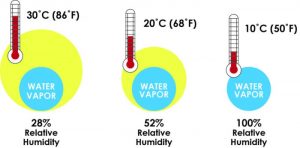
An equal volume of water vapor will result in different levels of relative humidity at different temperatures. Therefore it is important that you are trying to balance your reptile’s humidity levels after you have established the proper temperature parameters.
If you are looking for how to increase humidity in a terrarium… then here are the first two keys takeaways:
- Higher relative humidity will require more water vapor in the air
- You must ensure your temperatures are set properly for the species you care for before trying to establish proper humidity levels.
How to Measure: Best Hygrometer for Reptiles
Okay, so I understand what relative humidity is but how do you measure it? What is the best hygrometer for reptiles?
There are many digital hygrometers on the market, typically you can save money by buying one off of Amazon rather than your local pet store.
You have two options when it comes to hygrometers:
- Inexpensive ($3-8), the two below are the ones I use (the white one seems to be more accurate, see below).Inexpensive hygrometers have two fairly serious faults. The first is that they are typically not that accurate and the second is over time they will become even more inaccurate as extended exposure to high humidity tends to damage the sensors.
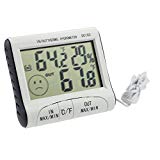
Best reptile hygrometer- DC103 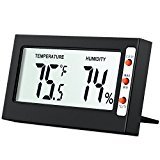
Best reptile – Brand: Amir - Or expensive ($10-25). You’ll find high-quality hygrometers in the cigar hobby. Those guys are serious about there relative humidity! Cigar hygrometers are very accurate, can handle high humidity for a very long time and can be calibrated and recalibrated to maintain accuracy.
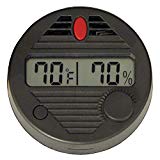

If Cheap Hygrometers are Inaccurate, Are they even worth it?
You don’t feel like spending the extra money on an expensive, more accurate hygrometer hey? I don’t blame you! I didn’t either. Fortunately, there is a way you can calibrate even the cheap units!
Calibrating a Hygrometer
How to Test a Hygrometer: 6 Steps (with Pictures) – wikiHow
Instead of a ziplock bag, I used a Tupperware container like in this video:
Note: You need to wait the full 24 hours, as the video says. Not 6 like the wikiHow article says.
Your inexpensive hygrometer will not have a button to adjust the reading it gives you so it is just something you’ll have to keep in mind. For example, this was my result after calibrating my units:
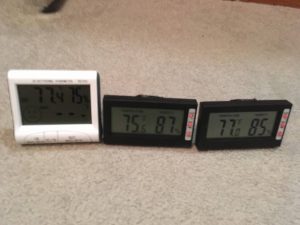
This meant that the white hygrometer bang on but the black ones seem to read about 10-12 % high. There is nothing I can do to the black ones to make them display an accurate figure, instead, I just have to do some mental math every time I look at them.
NOTE: I redid this calibration about 1 year later and the white one then displayed 72% (i.e. 3 % low) and the black ones displayed 79% (4% high). As I said above, over time the inexpensive hygrometers will fluctuate in their accuracy.
How to Increase Humidity in a Terrarium
There are several different ways you can increase humidity in your animal’s terrarium. Your goal should be to set your enclosure up in a way that the relative humidity stays within your animal’s requirements with little to no regular intervention.
In other words, you should not be fighting with your humidity levels on a regular basis. Things should be set up in a way that your humidity natural sits in the healthy range for your specific animal.
How to Increase Humidity in a Terrarium: Various Methods
Ventilation:
The more ventilation you have the lower you relative humidity will be. If you have an animal that requires high levels of humidity than limited ventilation is in order.
My Brazilian Rainbow Boa enclosure only has eight vent holes, four of them are shown below:
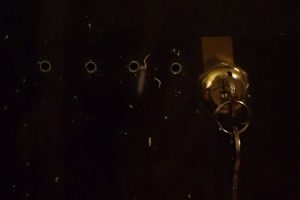
Water Dish:
This one is pretty straightforward! The larger the surface area of your water dish, the more evaporation, the more water vapor in the air of your terrarium. Some people like to but their water dish on the warm side of the enclosure to illicit more evaporation. In my opinion that encourages bacteria growth in the water dish.
I like to use large plastic containers for my water dishes (without the lid obviously):
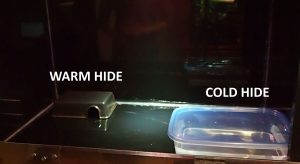
Substrate:
There are many types of substrates you can use to help maintain humidity in your terrarium. Cypress mulch and EcoEarthare my favorites, you can read more about that in this article: Best Ball Python Substrate.
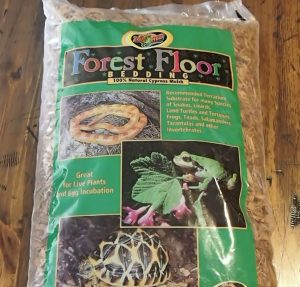
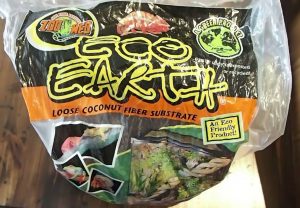
These are great substrates but keep in mind there affects on your terrarium’s humidity is not permanent. They will slowly dry out over time and no longer provide as much moisture as they did right out of the bag.
Misting:
Misting your terrarium is one of those controversial methods! Many people say you should not use misting as a way to maintain humidity (unless of course, you are using it for your animal’s drinking water).
Generally, people say to avoid this method for two reasons: 1) it implies that you have not done a great job setting up your enclosure so it can maintain proper humidity on its own and 2) it can lead to too much sitting-water in the terrarium.
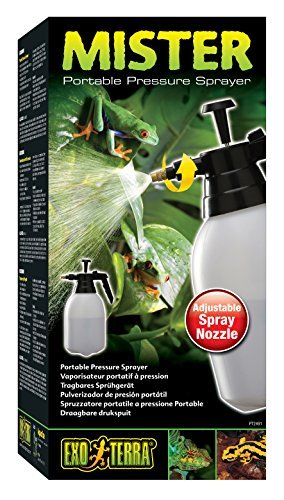
“Anti-misters” definitely have a point! This is a method that should be used sparingly but I do think it has its place provided it is done properly. If you are like me and have to deal with an extremely arid climate then misting may be a necessity for you on occasion.
When I mist, I make sure to mix around the substrate while I do it. I am looking to create a slightly moistened substrate and that is it, not sopping wet!
Sphagnum moss for Snakes and other Critters!
Just recently I tried out sphagnum moss by Zoomed and loved it! It is a very easy (and reusable) product that holds moisture for a very long period of time! I added it to my Brazilian rainbow enclosure and it maintained a relative humidity of over 90% for more than 2 weeks straight without having to be re-moistened.
I highly recommend this product if you are needing a boost in your humidity levels. Watch my full video review below:
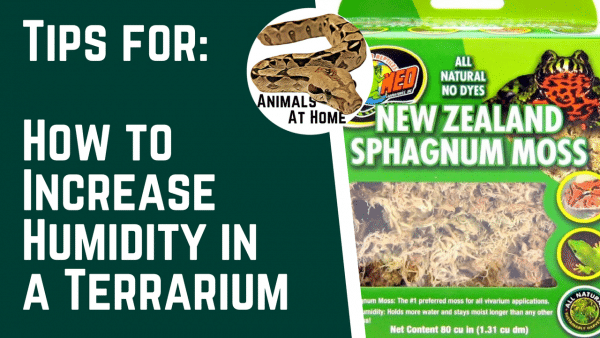

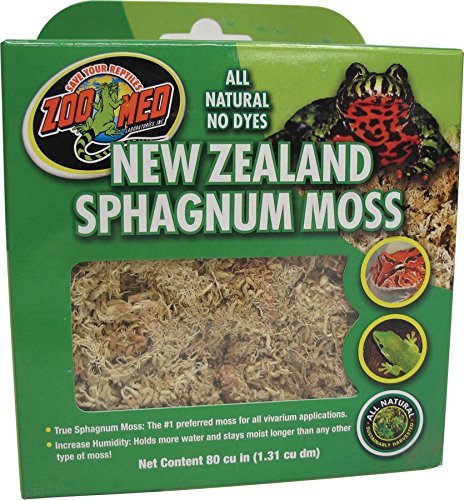
One Reply to “How to Increase Humidity in a Terrarium”